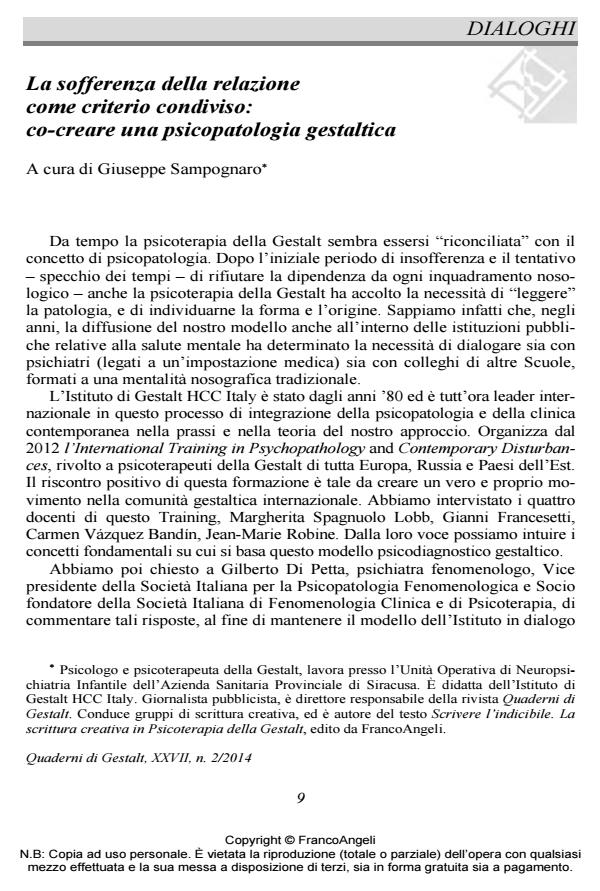The suffering of the "between" as a shared guideline: co-creating a Gestalt psychopathology model
Journal title QUADERNI DI GESTALT
Author/s Giuseppe Sampognaro
Publishing Year 2015 Issue 2014/2
Language Italian Pages 22 P. 9-30 File size 153 KB
DOI 10.3280/GEST2014-002002
DOI is like a bar code for intellectual property: to have more infomation
click here
Below, you can see the article first page
If you want to buy this article in PDF format, you can do it, following the instructions to buy download credits

FrancoAngeli is member of Publishers International Linking Association, Inc (PILA), a not-for-profit association which run the CrossRef service enabling links to and from online scholarly content.
The author addresses a few questions to the international trainers of the psychopathology program of the Istituto di Gestalt HCC Italy, in order to define the concept of psychopathology according to our model. Their answers tend to agree on the value of intrinsic and aesthetic diagnosis and on the concept of the suffering relational field. At the same time, they highlight the importance of the concept of "polyphonic development of domains" as a turning point that offers a key for diagnosis as well as therapeutic hint to follow within contact with a patient. As a conclusion, phenomenologist Gilberto Di Petta hopes that psychopathology may increasingly adhere to a phenomenological attitude ranging from the objective to the intersubjective.
Keywords: Diagnosis, suffering, relationship, psychopathology, phenomenology, domains
Giuseppe Sampognaro, La sofferenza della relazione come criterio condiviso: co-creare una psicopatologia gestaltica in "QUADERNI DI GESTALT" 2/2014, pp 9-30, DOI: 10.3280/GEST2014-002002